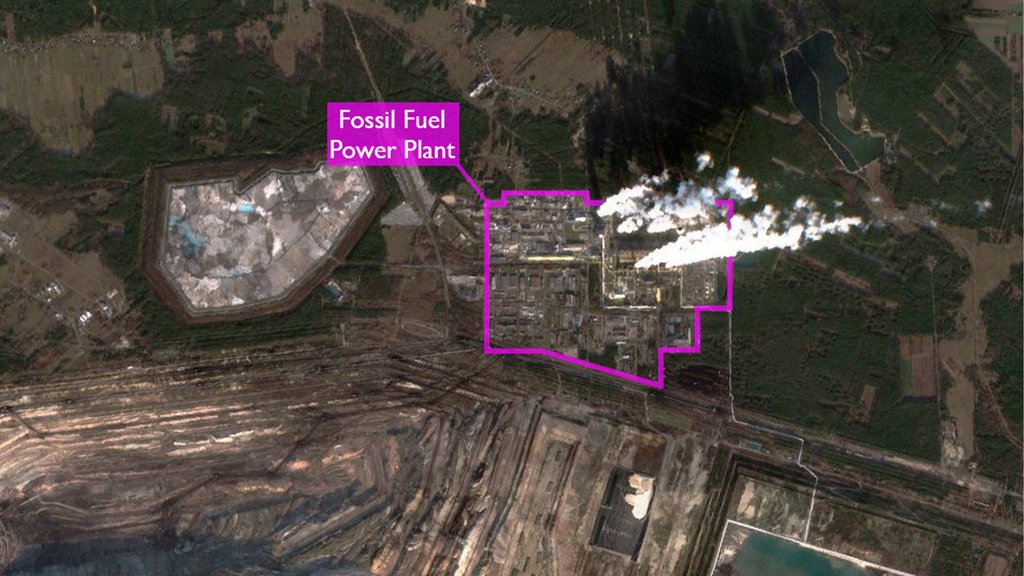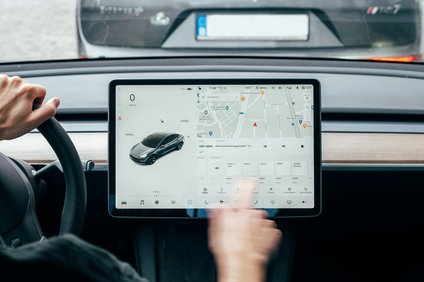Research - 21.07.2021 - 00:00
Monitoring climate pollutants from space
Global CO2 emissions are a blind spot on the data map. The HSG research team led by Prof. Damian Borth and Dr. Michael Mommert wants to change that. Using satellite images, they will soon be able to locate all fossil fuel power plants worldwide in order to track down pollutant emitters. Using artificial intelligence, the researchers will evaluate the data and determine where and how much CO2 is emitted and who has to compensate for the pollutants.

22 July 2021. "With respect to climate change, we can only afford to emit more CO2 if we are simultaneously able to compensate for the emissions elsewhere, but how much CO2 do we really emit all around the globe?" says Damian Borth, Professor of Artificial Intelligence and Machine Learning at the School of Computer Science at the University of St.Gallen (HSG). With this project, the team is looking into the question of how CO2 emitters can be found and monitored in the long term. The goal is to reduce CO2 with the help of emissions transparency. In other words: "Knowing exactly which industry players do contribute to climate change will allow us to use mechanism such as environmental ratings to force them to comply with international climate agreements, stated the researchers.”
Locate and monitor fossil fuel power plants worldwide
Anthropogenic releases of greenhouse gas (GHG) emissions from industrial activities have been identified as the main driver of global warming. Quantitative monitoring of these emissions is imperative to fully understand their impact on the Earth's climate and enforce emissions regulations on a large scale. "We started monitoring floods from space in 2016 at the German Research Centre for Artificial Intelligence (DFKI) using satellite data to provide important situational information to emergency responders on the ground. As you can see, floods are becoming an ever-greater danger in Europe as well, which is largely due to climate change. That's why we are switching to climate change monitoring now," says Damian Borth. The St.Gallen professor of Artificial Intelligence and Machine Learning explains that similarly structured deep neural networks, which can recognise floods, are also suitable to find fossil fuel power plants and to measure the pollutants they emit globally in freely available satellite data from the European Space Agency (ESA).
The goal is to continuously scan all power plants, first in Europe and then worldwide, through our AI approaches and quantify their emissions.
Michael Mommert
Dr Michael Mommert adds: "We have just published two papers in which we show that with the help of deep neural networks it is quite possible to identify the type of fossil power plants and to measure the smoke from their chimneys pixel-accurate which we need for correct emissions estimations. The goal is to continuously scan all power plants, first in Europe and then worldwide, through our AI approaches and quantify their emissions." The computer constantly learns with the help of input from the researchers and thus refines the analysis of the satellite data until it is possible to trace exactly when which power plant emits how much CO2 into the atmosphere and where.
Monitor heavy industry and avoid green washing
"In a further step, we want to apply this procedure to heavy industry and measure CO2 emissions here as well," says Damian Borth. Then one could link the evaluated data with sustainability reports worldwide and check whether the information provided by emitters corresponds to the real measured CO2 emissions. Rating agencies use this information to rate companies on environmental issues and thus enable investors to invest "green". "Financial leverage is probably the most efficient way to achieve environmentally sustainable action in industry. Just in the last few weeks, investors with over USD 43 trillion in assets have committed to NetZero, which is almost half of the world's assets invested," says Damian Borth.
Images from space for an environmentally friendly future
But the results of the evaluations do not only serve as indirect "leverage" or "incentive" for climate-friendly action. "We are not only interested in installing a camera in space that will convict climate sinners: Together with the satellite images, artificial intelligence also provides essential information for many other areas, such as the protection of biodiversity, the monitoring of air quality in urban areas or the protection of nature in agriculture.
Transparency can really move us forward efficiently in the climate crisis.
Damian Borth
Powerful model and data analysis with AI
"We are still at the beginning facing a gigantic mountain of data and its analysis," says Borth. "We are confident that we can use the data to make a positive impact on global climate action. Transparency can really move us forward efficiently here in the climate crisis."
The performance of the first models is still limited by occasional confusion with reflecting surface objects and human limitations in the annotation of the smoke clouds. We hope that with the help of novel training approaches (so-called self-supervised learning) and ESA's enormous amount of data, we will be able to perfect our models to within a few percentage error points in the future. One more point is important to Damian Borth: "We are not playing Big Brother, our work has the goal of bringing about climate-friendly action. Human interaction or even the recognition of individual persons is not possible through our models.
The first preliminary work has already been published at the IEEE IGARSS and the NeurIPS workshop on climate change. The researchers are in close contact with Prof. Andreas Hoepner, member of the Technical Expert Group on Sustainable Finance of the European Union, and on the application side with Institutional Shareholder Services Inc (ISS) in order to be able to incorporate sustainability elements into the research work. Locally, in St.Gallen, the HSG research team is already working successfully with the municipal utilities and the power plant of the city of St.Gallen.
Prof. Dr Damian Borth is Full Professor of Artificial Intelligence and Machine Learning (AIML) at the University of St.Gallen (HSG). Dr Michael Mommert heads the Earth Observation & Remote Sensing group at the AIML Chair.
Image: ESA
More articles from the same category
This could also be of interest to you
Discover our special topics















